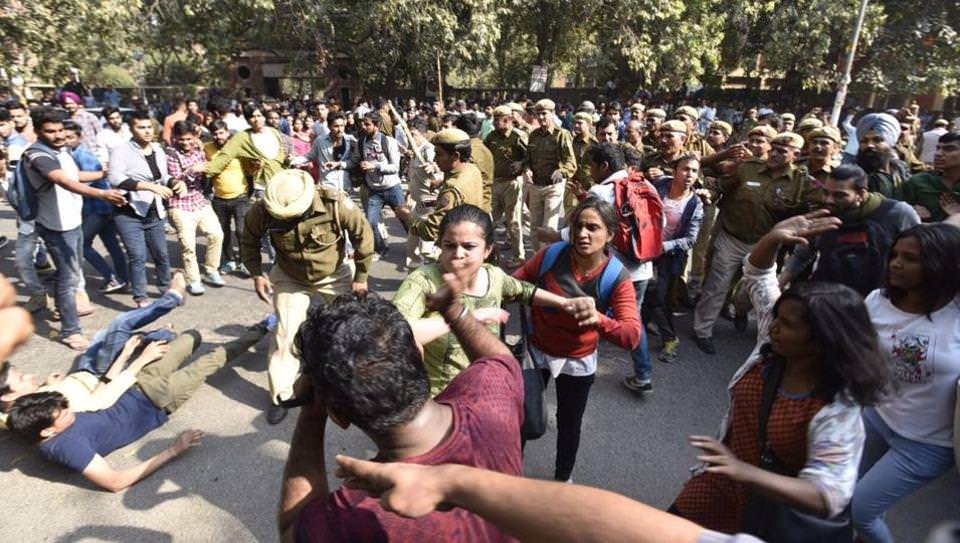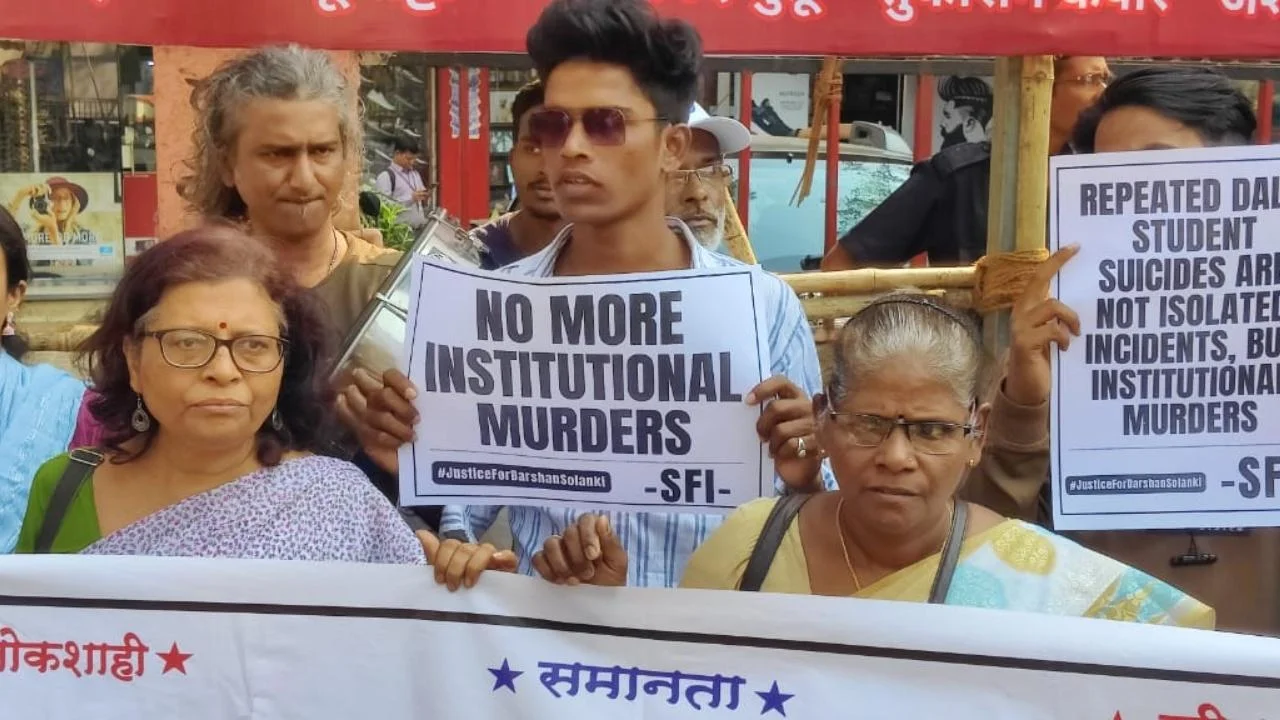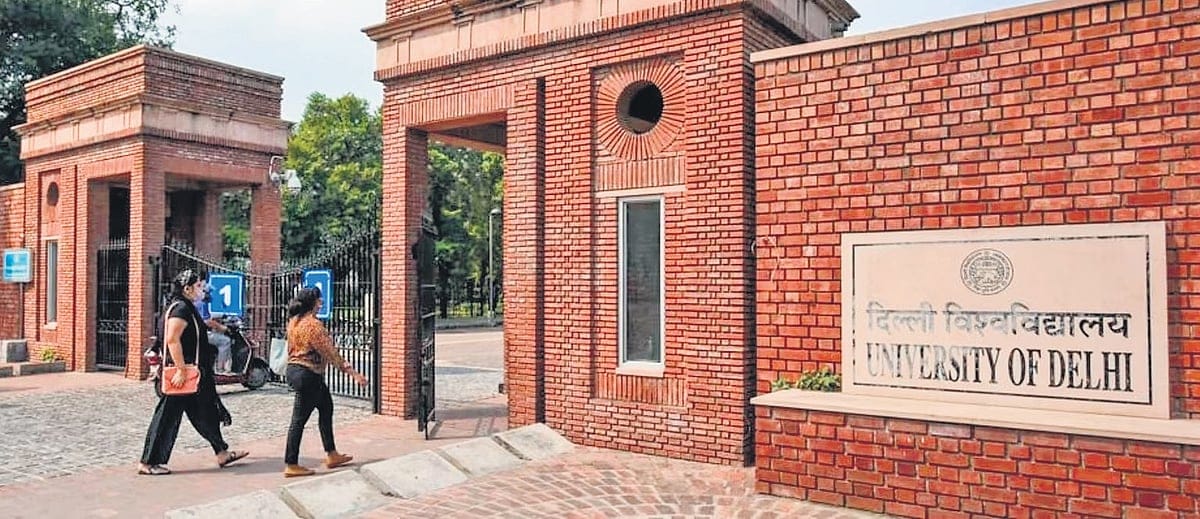University spaces cater to a very crucial requirement in the society. Their purpose is to generate discussion and dialogue – especially in a country like ours that is geographically and culturally diverse. It becomes a ground for experimentation where people from everywhere come to produce a mix of ideas that continuously keep evolving. The right to debate without threat of physical or mental violence is crucial to this idea of university space. When this right is denied to the student body in terms of systematic silencing and also by framing the whole idea of any kind of dissent as ‘anti-national’, it becomes necessary to inspect how the people propounding these categories operate.
Ramjas College, University of Delhi hosted a conference titled Cultures of Protest on 21st and 22nd of February 2017. The first day of the conference started out peacefully with the league of students and scholars gathering together to discuss ideas. This, however, didn’t last long as the unsuspecting group of students with their paraphernalia of pens and papers soon faced a mob full of stone-pelters and gropers crying “Bharat Mata Ki Jai” and “Vande Mataram”. Members of Akhil Bharatiya Vidyarthi Parishad (ABVP) – the student organization affiliated to the right-wing Hindutva party Rashtriya Swayamsevak Sangh (RSS) – staged an illegal protest inside the college campus playing ‘patriotic’ songs to disrupt the session. Soon, the crowd of these ‘patriots’ turned into a full-fledged lynch mob protesting Umar Khalid’s presence in the conference. However, this didn’t end here as the mob continued to harass the student-teacher community even after the administration relented.
The students decided to hold a peaceful march against the violation of free speech around the campus after which branches of the trees were broken and hurled at them. Meenakshi Sharma, one of the unsuspecting students who attended the march says, “They (ABVP) threw bricks at the protesters and I saw an injured person being whisked away and another screaming for someone to call an ambulance for him. There was a lot of police force but they were simply incapable of controlling the violent crowd”.
Later, when the third session began without Umar Khalid, the crowd surrounded the whole area and pelted stones through the glass windows. Not only was the conference disrupted, but the students and teachers were trapped in the room for almost 30-40 minutes in a state of panic. The police then declared that the situation was out of their control. The students still didn’t want to relent, but the teachers convinced them on the accord of their own physical safety. The police continued to be passive on the second day as well.
Continuous chants of “Bharat Mata Ki Jai” and “Vande Mataram” continued amidst threats of physical violence. The ABVP mob (almost all men) were groping students (men and women alike) and saying “Azadi chahiye tujhe? Main batata hun” (You want freedom? I will tell you). They also said that they would only allow the students to exit if they said “Vande Mataram”.
This kind of violence tells us that the mob understands patriotism to be something that has to be instilled forcefully through fear rather than cultivating a space for debate and discussion that accommodates all and hence, gives rise to a sense of collective loyalty. The hijacking of slogans for the use of violence against the unarmed crowd of people seeking knowledge is a severe violation of democratic rights and intellectual freedom.
As I mentioned earlier, the title of the conference was “Cultures Of Protest”. One of the panelists had earlier talked about how and why University should be a space to nurture forms of dissent through critical thinking and dialogue. According to him, the university is one of the very few institutions that can promote access of merit to all just because there’s a possibility of distinct voices being heard and included. The assault that followed puts a dark shadow on his optimistic statements. This conference, too, was held in the vein of dialogue and people were free to voice out their disagreements.
Instead, ABVP chose violence to protest what they understand to be ‘anti-national’. The question we need to ask here is does shouting “Vande Mataram” and “Bharat Mata Ki Jai” really make one more committed to the democratic ideals of unity, peace and freedom that the constitution upholds? Then whose nation is it? Is this a nation built on the policies of exclusion and silencing? Quite literally, the space of discussion was monopolized by the crowd whose agenda was “If you don’t agree with us, we will hunt you”.
Dhrubo Jyoti, a panellist in the conference wrote after the event:
Later the same day, these ABVP protesters also marched violently towards the Pinjra Tod event where women were discussing their grievances related to accommodation and harassment cases shouting “Bharat Mata Ki Jai”. The police quickly anticipated violence and shielded the area with barricades. MLA Pankaj Pushkar, who was present during the hearing, condemned this attempt to violate free speech.
The violence continued on the second day as well when the students of Ramjas College gathered for a silent protest on campus. ABVP protesters came in and started recording the faces of the students so that they could target them in college later. One of the students, who wished to remain unnamed, claimed that they were doing the same on the 21st too. The students were evacuated from the premises but the scuffle continued. One of the protesters wrote that he was beaten up by 4 men and a college teacher from ABVP, and asked to recite “Vande Mataram“, and also had his glasses broken.
ABVP’s justification of the attack was that the students were conspiring against “the idea of India”. Is our “idea of India” fragile enough to be threatened by a small group of young students holding peaceful discussions as their form of protest? Does this “idea of India” need to be protected by planning a calculated witch-hunt of everyone that dares ask questions?
In an environment where asking questions invites attack, any dissent gets drowned in the cry of the mob. The mob hides behind its facelessness and ambiguous statements like “Bharat Mata Ki Jai”. Whether it is stone-pelting, targeting of students, or the beating up of people – there are several serious violations of civil rights that are to be considered. And along with this, I invite my readers to also think about what forms of dissent and even assent can have validity in this culture of hooliganism. How do we express anything that doesn’t agree with the hegemonic order without the ambiguous concept of “Bharat Mata” thrown at us? Many people are and were silenced because of this culture of threat that perpetuates toxic masculine violence against any rising voices.
Do we conform and remain silent to avoid fitting into these uncritical tags of ‘national’ and ‘anti-national’? And how is this ‘nationalism’ is defended, and against what? It is time to consider our own responses to these tags and towards those who claim it by the violence and strategic silencing of others.
About the author(s)
Richa Thakur is a literature student who reads people and books wherever she goes. Researcher and experimenter by technique, she is currently concocting formulas to fight all kinds of patriarchy.




